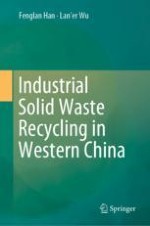2019 | OriginalPaper | Chapter
7. Comprehensive Utilization of Carbide Slag
Authors : Fenglan Han, Laner Wu
Published in: Industrial Solid Waste Recycling in Western China
Publisher: Springer Singapore
Activate our intelligent search to find suitable subject content or patents.
Select sections of text to find matching patents with Artificial Intelligence. powered by
Select sections of text to find additional relevant content using AI-assisted search. powered by
